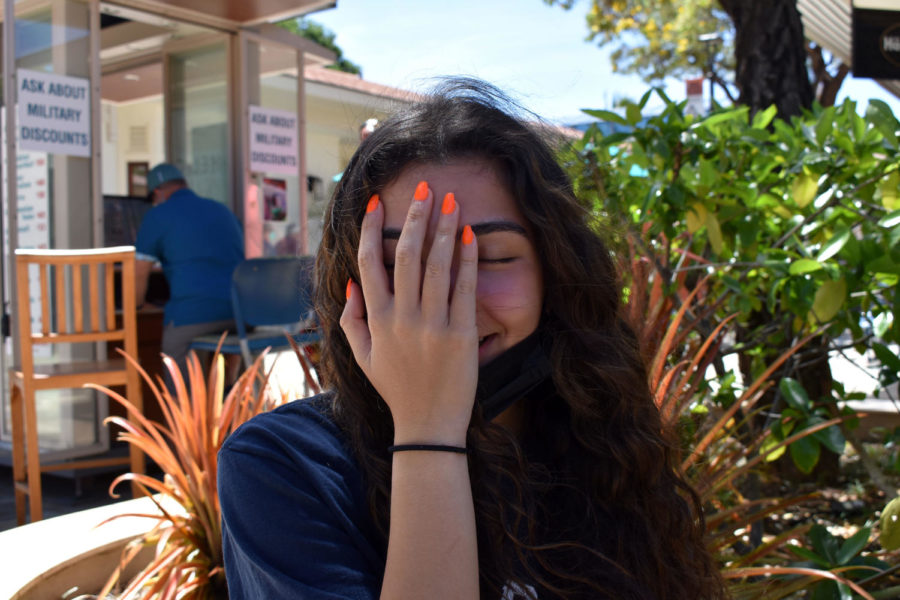The Evolution of Remote Learning
June 10, 2021
Before 2020, full time online learning was almost unheard of in the US, but now, it makes up a large percent of schooling nationwide. It has been a long journey with online learning, with changes in COVID case counts resulting in the opening and closing of various extracurricular and curricular opportunities.
In the beginning of the 2020-2021 school year, the unstructured environment of the past online schooling year brought on negative feelings about the upcoming year. Senior Emily Robinson states, “I was kind of skeptical. I didn’t think we were going to be able to do much. I wasn’t sure how Zoom classes would work, and I didn’t have a good outlook.” This was a popular opinion; student’s first experience with online learning towards the 2019-2020 year was confusing and a rapid adjustment, so when remote learning re-emerged with newer features, students were dubious to say the least. Freshman Suzette Alancheril voices her opinion on this, stating, “Starting high school was stressful enough, but being behind a screen was extra difficult.” She goes on to explain that although there was a lot of stress, it turned out different than she thought. “In some ways the transition was easier because it was behind a screen, but it was still kind of uncomfortable and really different,” she explained. This discomfort with remote learning also resulted in teachers changing up their teaching style to cater towards a smoother experience for students. Social Studies teachers Isabelle Matlick explains how she did this, stating, “I felt like at the beginning of online learning, it was more like doing anything was good, as long as you had something… and at the beginning of the year, at least from my perspective, I wasn’t really under the impression that students didn’t really want to interact, so I took that under consideration.”
As the year went by, students and teachers gained more comfort with the situation, allowing them more flexibility with daily classroom activities. Alancheril states, “After a while, a lot of people got better at using new technology, like me. I couldn’t do anything before online learning, but now I’m a lot better with technology and computers.” The increased comfort with Zoom led to more participation and flexibility with programs. Things like Kahoot and Zoom polls became easier to integrate and led to more engagement. Matlick expands on this, stating, “As we got more comfortable, some teachers and myself tried to integrate things as well as we could, and we tried to be more creative.” For Matlick, this involved creating home breakout rooms; a set of fixed breakout rooms. Home breakout rooms would be determined partly by random selection, and partly through a quiz asking if students had any friends they would like to be placed with. This combination allowed for students to have a mix of friends and new students, enabling them to feel more comfortable participating in breakout rooms.
Students also began to see the positives of online learning, such as increased flexibility. Robinson explains how she was able to access class from another state, saying, “When I went hiking in Utah, remote learning allowed me to do school from there.” It was not just locational flexibility, but also schedule and work time flexibility as well. Alancheril states, “I got to work on other things besides school. School did take up a lot of my time, but I didn’t have to go from place to place as much, so I could start reading more, and I could pick up more hobbies, like baking.”
Later in the year, hybrid learning was introduced as an option. For the Issaquah School District, this was in early April. The late introduction of hybrid learning led to many students staying at home. Sophomore Colt Abplanalp explains, “I didn’t want to change up my schedule. I’d have to wake up earlier and switch up my routine, and I didn’t feel like it was worth the risk.” Other students went the opposite direction and went hybrid for a little change. Robinson explains that a pushing factor for her return to hybrid learning was that she missed her teachers. “I kind of got to know some of my teachers through online school, but I missed having that interaction with them,” she states. Another factor that helped with interaction was the opening of school sports, which helped connect students and create friendships.
About a month after hybrid learning was implemented in the Issaquah School District, it was announced that students would be able to return in-person for up to four days per week. An ISD newsletter states, “As of May 20, 2021 the key indicators of COVID-19 activity in King County, dipped to 191/100K residents. Per the agreement between the Issaquah School District and the Issaquah Education Association (our teachers union), once cases are at or less than 200/100K for five consecutive school days, middle and high school students will be provided the option to return to school four days a week (Monday, Tuesday, Thursday, and Friday).” This provided an opportunity for students to participate in an experience more similar to school before the pandemic.
Our journey with remote learning has been full of twists and turns, with many changes occurring throughout the year. However, as a result of this, students have found methods and ways to participate that enhance the way they learn, creating a unique educational environment.


